This article is more than 1 year old
Space dogs and Dragons: A brief history of reentry tech
How a flying Frenchman paved the way for space exploration
We're going to need a bigger 'chute
Having honed its oceanic recovery skills, the US was ready to pitch for the Moon with Apollo. Work on the Apollo command module actually began in 1961 - before Gemini - but its "Earth landing system" (ELS) required some extra parachute power to support the capsule's greater weight.
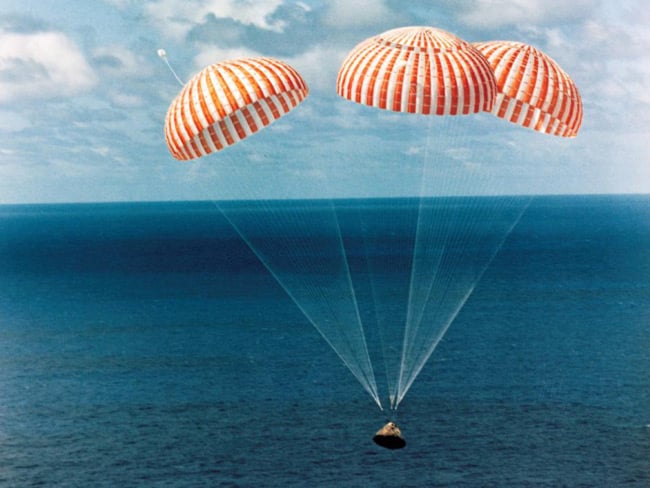
The Apollo 14 command module splashes down on 9 February, 1971
Following reentry, the command module's forward heat shield was jettisoned at an altitude of 7,000m. Drogue 'chutes then slowed it to around 200km/h, until at 3,300m they too were jettisoned and three pilot parachutes pulled out the mains, before splashdown at 35km/h.
Crushable ribs at the first point of capsule contact with the water absorbed some of the impact energy, after which the presumably largely unrattled crew awaited recovery.
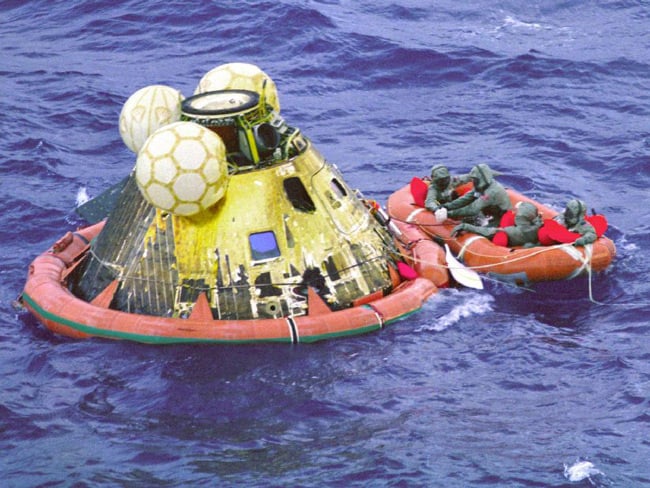
The Apollo 11 command module after splashdown in 1969. Pic: NASA
The USSR, meanwhile, had it own lunar ambitions, which ultimately resulted in the highly successful Soyuz spacecraft. Before Soyuz rose from the drawing board, the Voskhod programme deployed a Vostok descent module with the added luxury of solid-fuel braking rocket strapped to the capsule's parachute lines.
Having ditched the Vostok's original cosmonaut ejector seat, this cushioning was essential for ground landings. The Soyuz capsule - a hemisphere atop a barely-angled conical body sitting on a convex heat shield - uses three solid-fuel braking engines which fire just above the ground to do the same job.
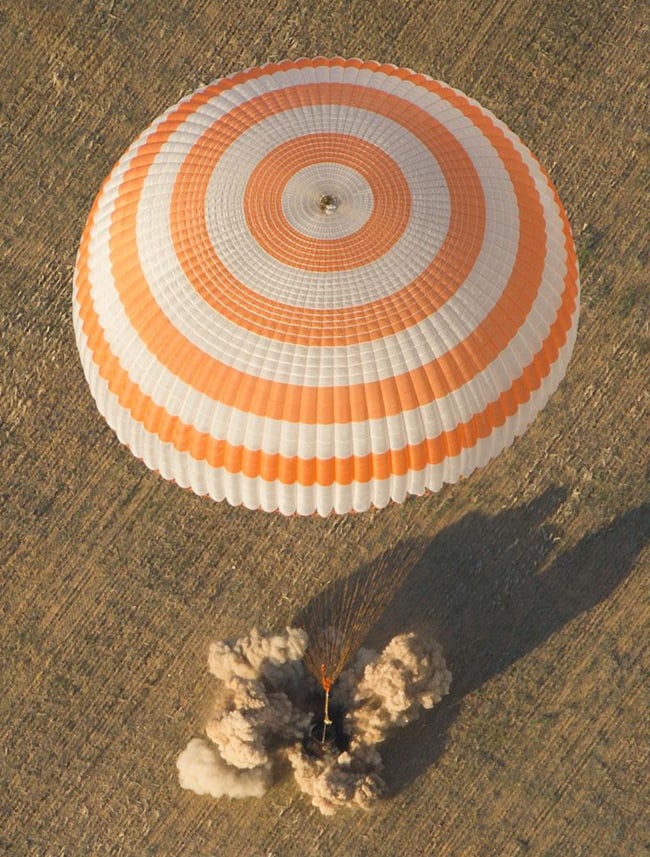
Soyuz TMA-04M touches down on 17 September, 2012. Pic: NASA/Carla Cioffi
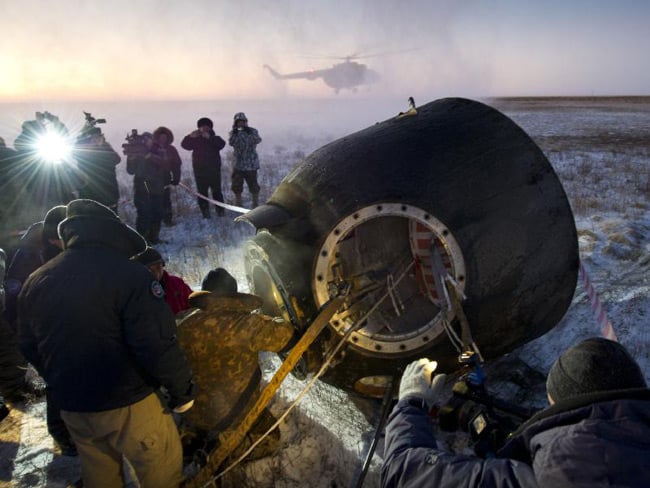
Soyuz TMA-02M after touchdown in Kazakhstan in 2011. Pic: NASA/Bill Ingalls
The capsule has shown itself to be highly robust, and the basic form is unchanged to this day, but Soyuz's first mission in 1967 ended in disaster with the death of cosmonaut Vladimir Komarov.
Shortly after launch, thing began to go seriously wrong. One of the spacecraft's solar panels failed to unfold, starving the vehicle of power. Breakdown of the automatic stabilisation system and other glitches prompted a mission abort.
Although the spacecraft reentered the atmosphere intact, the main parachute didn't deploy, and Komarov crashed to Earth, becoming the first space flight fatality.3
In 1971, cosmonauts Vladislav Volkov, Georgi Dobrovolski and Viktor Patsayev were killed when their Soyuz 11 capsule depressurised prior to reentry, although recovery crews weren't aware of the fatal accident until the vehicle landed normally in Kazakhstan.
Soyuz has since, however, provided years of reliable service, including servicing the International Space Station.
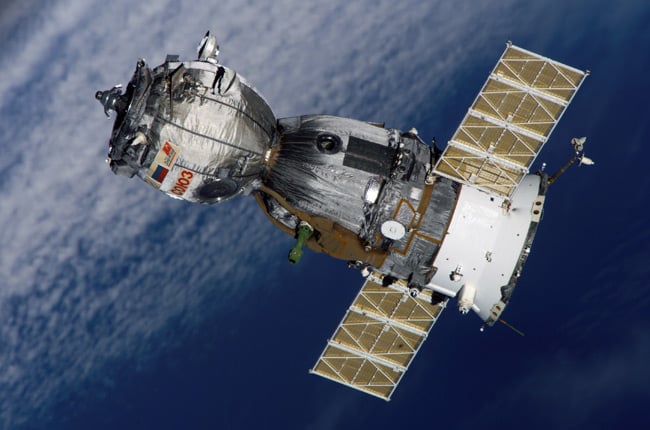
Soyuz TMA-7 as seen from the International Space Station in October 2005. Pic: NASA
China too has benefited from Soyuz tech, with the capsule for its Shenzhou manned missions reportedly an upscaled version of the Russian design, complete with a trio of braking engines to soften the blow.
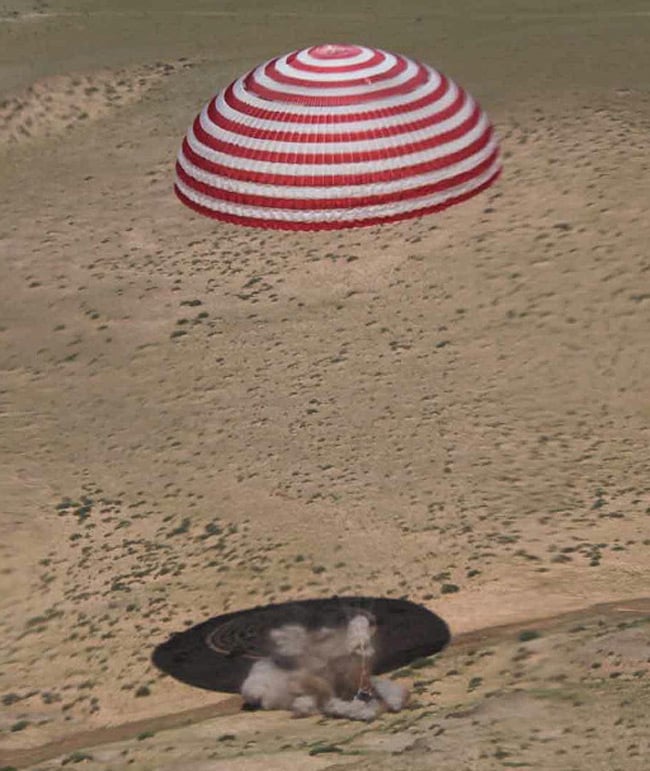
The Shenzou 9 capsule lands in Inner Mongolia on 29 June 2012
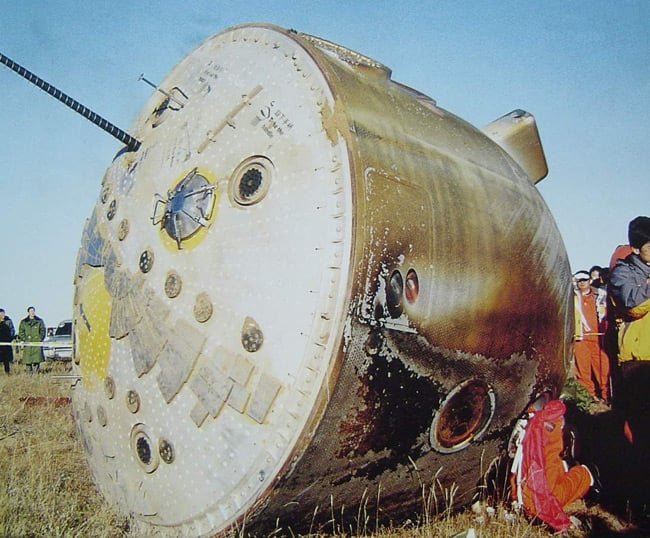
The Shenzhou 5 capsule after landing
